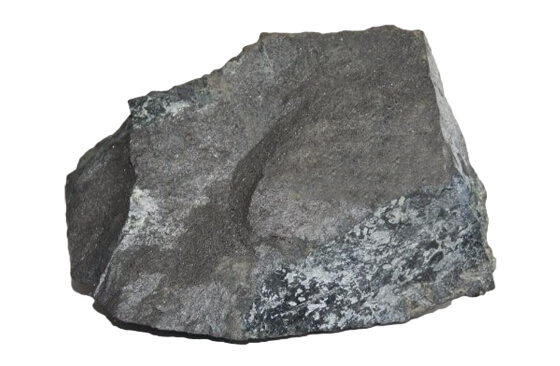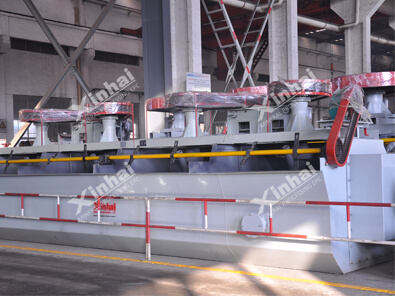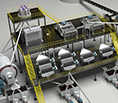Iron Ore Processing Explained
 Chaya
Chaya
 Aug 31, 2021
Aug 31, 2021
 3988
3988
If you want to know more details about equipment, solutions, etc, please click the button below for free consultation, or leave your requirements!

Iron ore is an important raw material for the production of steel. Iron ore processing is also essential to providing a high-quality raw material for the metallurgical production chain. This article will take you to learn iron ore processing.
01 Definition of Iron Ore Processing
BackThe process of separating useful minerals from gangue minerals or harmful minerals in raw materials by physical or chemical methods, or separating a variety of useful minerals, is called beneficiation, also known as mineral processing.
There are many types of iron ore, and different iron ore processes are different, depending on the property of the ore to achieve the best beneficiation effect.
The specific process of iron ore processing is as follows: iron ore is gradually separated from iron after crushing, screening, grinding, classifying, magnetic separation, flotation, gravity separation, roasting reduction, filtration, and dehydration.
Thus, a mineral aggregate containing iron element or iron compound that can be used economically is obtained.
02 Iron Ore Beneficiation Methods
BackCommon iron types are magnetite, hematite, limonite, siderite, compound iron ore (like vanadium-titanium magnetite ore, pyrite). They have different beneficiation methods, as follows:
Magnetite Beneficiation
The main component of magnetite is Fe₃O₄. Magnetite beneficiation methods are dominant in the separation of iron ore. The weak magnetic lean iron ore is often processed by gravity separation, magnetic separation, flotation, roasting, magnetic separation and combined processes; strong magnetic iron ore directly adopt magnetic separation.

Hematite Beneficiation
The main component of hematite is Fe₂O₃. Single hematite ore often adopts magnetic roasting and magnetic separation, and gravity separation, flotation, strong magnetic separation and their combined process. Hematite containing polymetallic hematite often adopts gravity separation, flotation, strong magnetic separation and their combined process.

Limonite Beneficiation
The main component of limonite is Fe₂O₃·H₂O. Limonite is rich in crystal water and has a low theoretical grade. Therefore, it is difficult for the iron concentrate grade to reach 60% by using physical beneficiation methods. The single separation process of limonite ore mainly includes gravity separation, magnetic separation, and flotation (positive and reverse flotation). Limonite is very easy to sludge during the grinding process, and the loss is serious, and it is difficult to obtain a high recovery rate.

Siderite Beneficiation
The main component of siderite is FeCO₃. The theoretical grade is 48.2%. Because the theoretical iron grade of siderite is low, and it often coexists with calcium, magnesium, and manganese in a similar symbiosis, physical beneficiation methods are often used, and the iron concentrate grade is difficult to reach more than 45%. The main process of siderite includes gravity separation, strong magnetic separation, flotation, combined process of magnetic-flotation separation and gravity-flotation separation, and magnetic roasting-weak magnetic separation process.

Composite Iron Ore Beneficiation
Rare earth iron ore often adopts weak magnetic separation-flotation separation-gravity separation-flotation separation, weak magnetic separation-strong magnetic separation-flotation separation.
Vanadium-titanium magnetite ore often adopts weak magnetic separation-gravity separation-flotation separation.
Polymetallic magnetite ore often adopts weak magnetic separation-flotation separation.
03 Main Equipment in Iron Processing Plant
BackFor the processing of iron ore, the magnetic separation process is generally used. The iron ore separation production line mainly including crushing equipment, screening equipment, grinding and classification equipment, magnetic separation equipment, etc. The composition of this equipment will maximize the economic value of minerals.
Crushing equipment: gyratory crusher, jaw crusher, cone crusher, high-pressure roller mill, hammer crusher, counter-roll crusher;

Magnetic separation equipment: magnetic pulley, magnetic separator, concentrated magnetic separator, magnetic separation column (washing machine);

Grinding equipment: ball mill, rod mill, autogenous mill, raymond mill;

Classification equipment: spiral classifier, submerged spiral classifier;

Filtration equipment: permanent magnet vacuum filter, disc vacuum filter;

Tailings recovery machine, dry separator, etc
04 Iron Ore Quality Standards
BackThere are generally five requirements for iron concentrates:
(1) High iron content. The iron content of magnetite concentrate should be more than 65%, hematite concentrate should be more than 60%, and limonite concentrate should be more than 50%. The fluctuation of iron content is less than ±0.5%.
(2) Low moisture content. Moisture has a great influence on storage and transportation, ore mixing, pelletizing, etc. Generally, the moisture of magnetite concentrate should be less than 10%, and the moisture of hematite concentrate and limonite concentrate should be less than 12%.
(3) Appropriate particle size. For the iron concentrate used for the production of pellets, the size of less than 0.074mm is required to account for more than 70%, and the specific surface area is preferably 1200-2000c㎡/g.
(4) The content of impurities is as low as possible (such as sulfur, phosphorus, lead, arsenic, zinc, copper and other harmful elements). Generally, S≤0.10%~0.35%, P≤0.05%~0.09%, Pb≤0.1% , As≤0.04%~0.07%, Zn≤0.1%~0.2%, Cu≤0.1%~0.2%, K₂O+Na₂O≤0.25%.
(5) Proper pH. The acidity and alkalinity of iron fine powder (including iron ore) refers to the acidity and alkalinity of the gangue components in the ore, specifically the ratio of calcium oxide to silicon dioxide. CaO/SiO₂ greater than 1 is alkaline ore, and CaO/SiO₂ less than 1 is acid mine. If the content of magnesia and alumina in the ore is high, (CaO+MgO)/(SiO₂+Al₂O₃) greater than 1 is alkaline ore, and vice versa.
05 Iron Concentrate Reprocessing
BackThe reprocessing of iron fine powder includes: ore blending, super fine powder, desulfurization, dephosphorization, desiliconization.
(1) Ore blending: Due to the different sources and varieties of ore raw materials in iron and steel plants, as well as the unstable composition of mine products, there are often cases of miscellaneous types, large fluctuations in composition and particle size. This situation will cause fluctuations in the quality of sintered ore and unstable furnace conditions during blast furnace smelting. The mixing operation of ore raw materials can provide sintering and iron-making production with stable quality ore raw materials, thereby improving the quality of sintering ore and improving the technical and economic indicators of blast furnace production.
(2) Super fine powder: Super fine iron powders are varieties of iron powders with particles smaller than 45 micron. Super fine iron powders vary in density, particle shape, flow-ability, purity, potential applications and price.
(3) Desulfurization and dephosphorization: The sulfur and phosphorus associated in iron ore is a relatively harmful element to iron ore, and it is difficult to remove sulfur and phosphorus by processing and smelting. If the sulfur and phosphorus element exceeds a certain amount, which will seriously affect the mechanical properties of steel products.
(4) Desiliconization: Iron ore contains high silica content, which is equivalent to sending waste into the blast furnace. Not only does it take up the space of the blast furnace, but also in order to remove the silica, a larger proportion of slagging solvent is required. The slagging reaction consumes heat and endothermic reaction. This will greatly increase the cost of steelmaking and ironmaking.
06To Sum Up
BackIn order to pursue higher economic benefits and seek more profits and returns, various iron-smelting and steel-smelting enterprises have put forward many more and more stringent requirements on the quality of iron ore concentrates. At present, the international quality indicators for high-quality pellets are iron content greater than 65%, silica content less than 3%, phosphorus content less than 0.05%, and sulfur content less than 0.01%.
At present, we need to disuse the production equipment and processes with high power consumption and serious pollution, carry out more thorough reforms, strengthen the research on the beneficiation technology of various refractory iron ore, realize energy saving and consumption reduction, and improve the grade of iron ore.
As a reliable partner in the global iron and steel business, we provides specialized solutions for iron ore mining and beneficiation, as well as for tailings management and processing.
 +86 182 3440 3483
+86 182 3440 3483 yanzhang19990421@gmail.com
yanzhang19990421@gmail.com




 Message
Message Chat Now
Chat Now


















